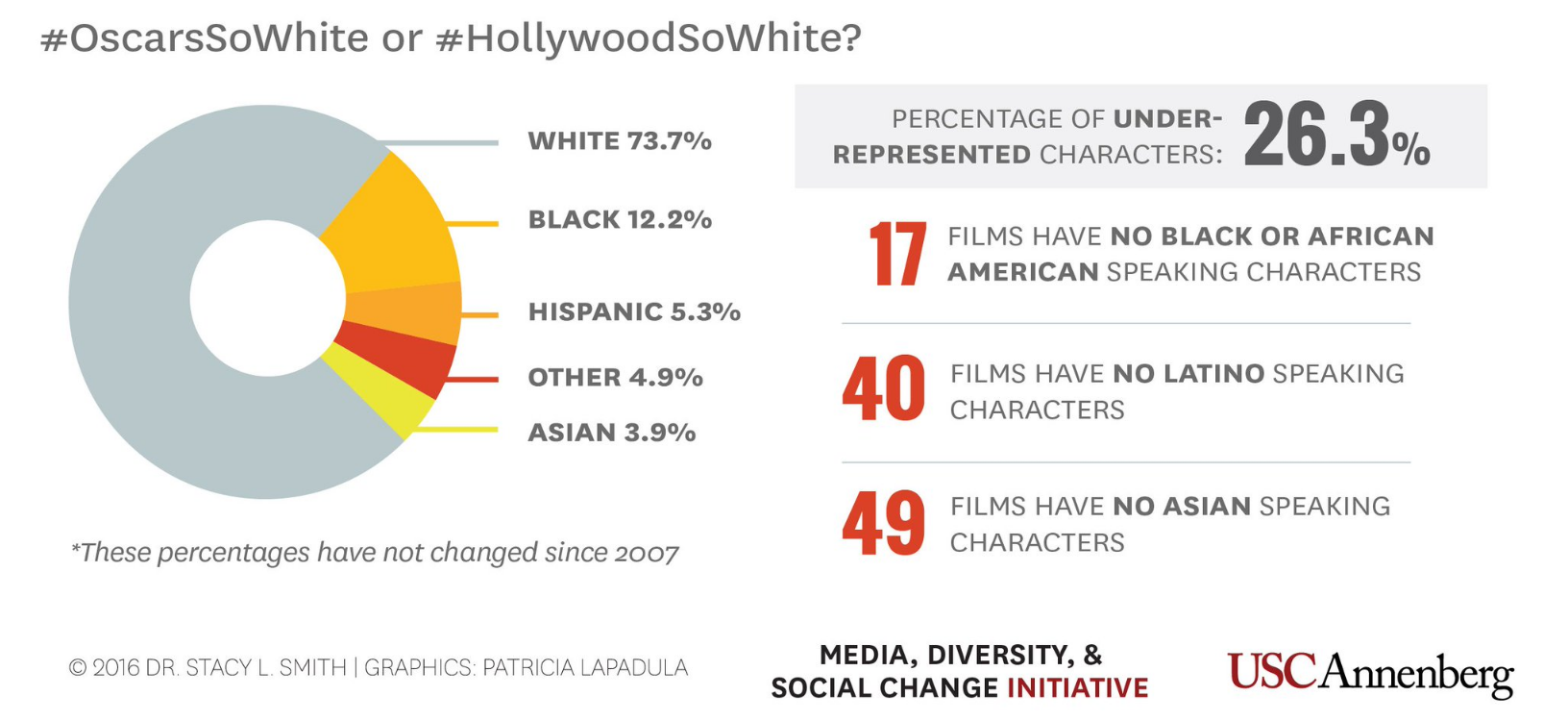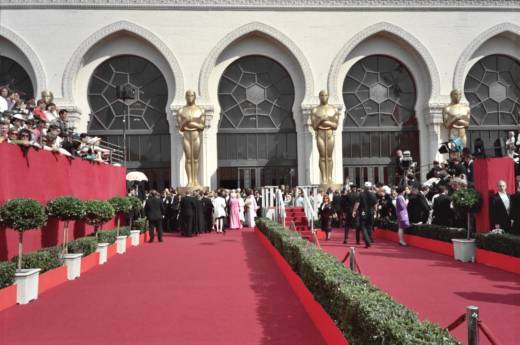Go here for more tips for using Do Now, using Twitter for teaching, and using other digital tools.
Lights, Camera…Diversity?
Hollywood has an inclusivity problem, according to a 2016 study by the University of Southern California’s Annenberg School for Communication and Journalism. The study, conducted by USC’s Media, Diversity, and Social Change Initiative, examined North America’s 100 top-grossing films of 2015, and found that 68.8 percent of speaking or named characters were male and 73.7 percent were white. In the films analyzed, “12.2 percent of speaking characters were Black, 5.3 percent were Latino, 3.9 were Asian American, less than one percent were Middle Eastern, less than one percent were Native Hawaiian or Pacific Islander, and 3.6 percent were of other or mixed race,” according to the report.
Social media campaigns like 2015’s #OscarsSoWhite helped raise awareness of the issue, leading to the Academy of Motion Pictures Arts and Sciences, the Oscars voting body, to examine its membership and invite more representatives from diverse communities.
While the 2017 Oscars saw a record number of wins for Black artists, other minorities have yet to see much representation on Hollywood’s biggest stage.
[media-credit id=11207 align="aligncenter" width="1632"] [/media-credit]
[/media-credit]
As one student sees it, this means progress in the industry, but not enough.
“Representation” by Anoushka Ambavanekar
My name is Anoushka Ambavanekar and I am a 15 year old Indian kid born in America. As a child, it was hard to find people who looked like me in the media and on TV. Most white kids had their pick of heroes. They wanted to be like Cinderella and Aurora, or Superman and Batman. For many kids of color like me, we didn’t have our pick of role models. The characters that we did see were all stereotyped versions of us. Whenever I would see an Indian character, I would get excited, until I realized that they were just another stereotypical “nerdy and smart” kid. As I grew older, things did not really change immensely. I started to see a little more representation of people of color in side characters, but rarely in the spotlight.
Today, there are a few shows that can be found starring people of color in non-stereotypical roles like Master of None, Quantico, Scandal, and Grey’s Anatomy. However, TV shows still do not represent the full diversity of America.
I remember watching the #OscarsSoWhite trend go viral last year. When the Oscars said they were going to do something about it, I was excited. I thought they would finally take the time to recognize the lack of people of color that are displayed in movies. However, they brought in all black speakers to talk about the lack of black people in the media. I was extremely disappointed. They had made things, quite literally, black and white. Even now, there is an immense lack of representation of many races in the media, including South Asians, East Asians, Latinos, Native Americans, and many more.
With a wide variety of racial minorities in the media and on TV, kids like me would have more role models to pick from and look up to. Seeing this year’s Oscars nominees, I can see that some progress has been made. There was a wide variety of black nominees in various categories, resulting in a record number of wins by black artists. However, there was a grand total of one Asian, and no Latinos, Native Americans, or other minorities, outside of the foreign language categories. While we have made a large step in the right direction, we still have a long way to go.
What’s your take on this issue? What would a truly diverse Hollywood ideally look like?
More Resources
VIDEO: The Data Behind Hollywood’s Sexism (TED)
The entire video is 15 minutes and 44 seconds. For brevity, we recommend watching until the 5:30 mark.
ARTICLE: Little “Meaningful Change’ In Hollywood Diversity: Report (NBC News)
“We’re seeing entrenched inequality,” Stacy L. Smith, a USC professor and the study’s lead author, told the Associated Press. “Whether we’re studying gender, race, ethnicity, LGBT or characters with disabilities, we’re really seeing exclusionary forces leaving out anybody that’s not a straight, white, able-bodied man.
INTERACTIVE: What It’s Really Like to Work in Hollywood* (If You’re Not a Straight White Man) (The New York Times)
“Here, 27 industry players reveal the stories behind the numbers — their personal experiences of not feeling seen, heard or accepted, and how they pushed forward.”
ARTICLE: Films In 2016 Saw A Record Number of Female Lead Roles (CNN Media)

 [/media-credit]
[/media-credit]